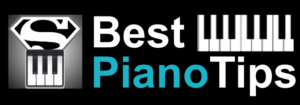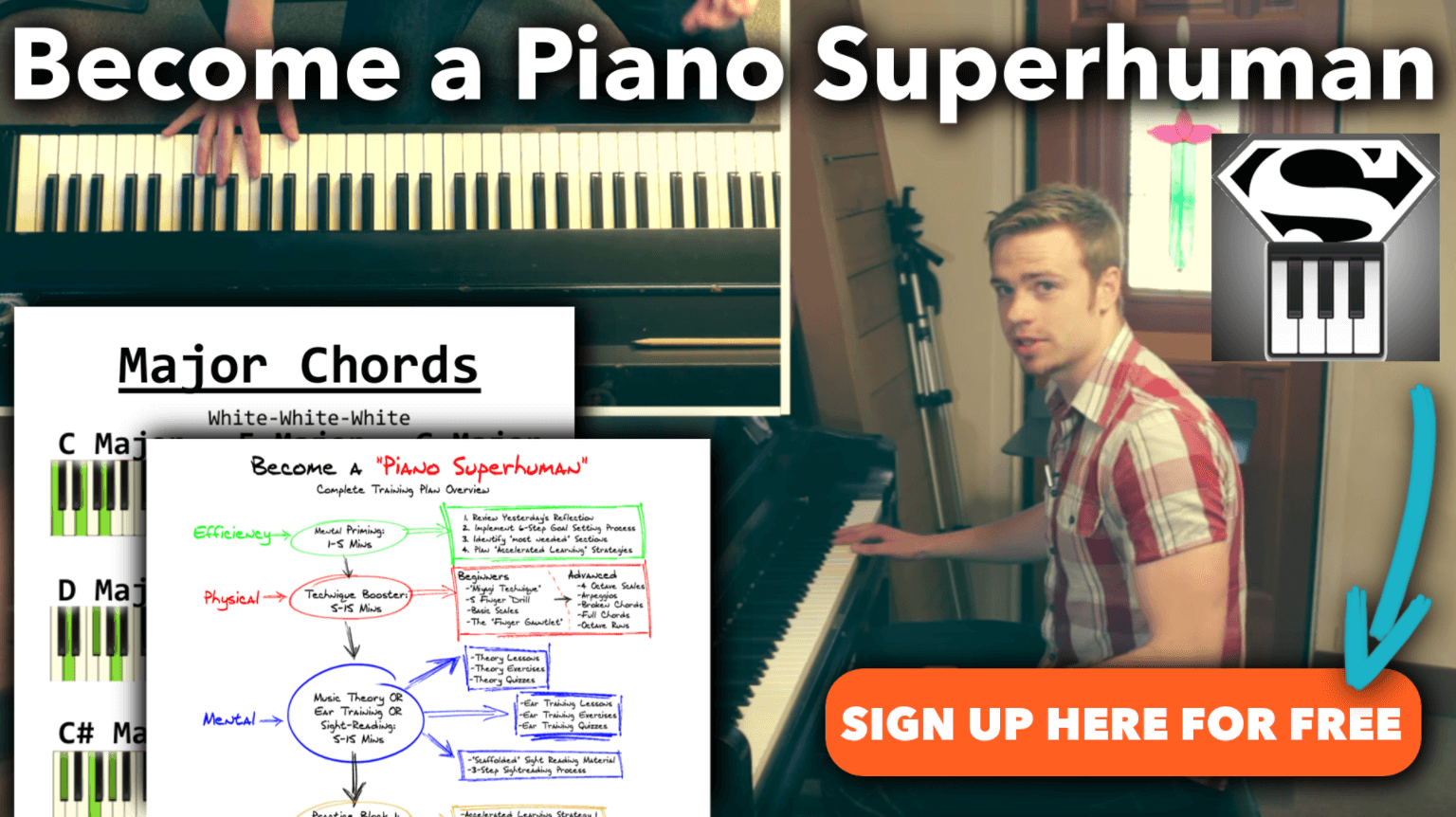To become a great, well rounded pianist, there are three main facets you need to develop: the Physical, the Mental, and the Emotional. All three are equally important, and to max out your potential as a pianist you should work on all three.
Everyone has one or two that they excel at naturally, and one or two they really need to work on. Know what type of person you are. Know what your strengths and weaknesses are and make sure you devote practice time to your weaknesses too. It won’t be fun at first, but once you start developing the skill it can become one of your strengths and help you become a better overall pianist. The nice thing is there are systematic strategies and techniques to working on all these aspects, and if you follow the system you’ll be able to go through the learning process much faster.
Lets break each down to discover what each is and how to develop each facet to the fullest extent.
1. Physical: Piano Technique
The physical side of piano is technique development. It’s the muscle coordination that takes place when playing. It’s the tools you use to make music beautiful. Things like how fast can you play scales, how good is your tone production, or how rapid your trills are. Technique is the first step to learning a piece. Without developing technique you won’t be able fully express yourself through your music.
Technique is essential for many reasons. First and foremost, it prevents injuries. Playing with bad technique can cripple you for weeks and prevent you from doing the thing you love: playing. It also helps you be more expressive. If you’re struggling to play a section because it’s too fast, there’s no way you’re going to be able to make it beautiful. Finally, good technique = good tone. A piano isn’t a set of “buttons” you press to produce a sound, it’s a complex mechanical system of hammers, and you can manipulate the sound by the way you play. Developing solid technique will help you produce that warm, full tone.
The two types of people
There are two main categories people fall into. Some people hate working on technique. For this type of person working on scales are like eating vegetables, they hate doing it but they know it’s good for them. They’re right-brained people. They can’t wait to get through learning the technique of a song so they can start focusing on playing it beautifully and putting emotion into it.
The other type of person loves working on technique. This is me. I love the flashy arpeggios, rapid octaves, and all the other impressive looking techniques out there. I also like the challenge and exactness of technique. I’m a black and white person. It easy to set specific, exact goals when learning technique. Goals like “I want to be able to play a B Minor scale at 138 beats per minute.” I get a huge sense of accomplishment from checking off a clear cut goal and it motivates me to practice.
(Btw, if you haven’t set up a Technique Goal Sheet, I’d download the one here).
Now if you’re someone who doesn’t enjoy the physical aspect, find a way to! Maybe it’s by setting these clear cut goals and trying to accomplish them. Maybe it’s by playing your scales with emotion, using crescendos and decrescendos to make it more interesting (do this regardless, it’ll help you learn them faster).
2. Mental: Theory, Sight-reading, Ear Training
The mental side of piano is also very important, but a lot of times it goes under the radar. The mental side is how you understand music, how notes relate to each other, and what makes certain chords and notes sound the way they do. It includes things like music theory, sight reading, playing by ear, and composition.
Understanding the mental side will help you learn songs much faster. Instead of learning 1,000 random notes, you’ll have a framework of what notes go together logically so you’ll only have to memorize several groups of notes and musical ideas. Also, having the mental side down is essential if you want to improvise, read lead sheets, or compose your own music.
The two types of people
Just like there are two types of people from a technique standpoint, there are two types of people from a mental standpoint. The first type is great at sight-reading. They can look at a page of notes and play exactly note for note what’s on the page.
The other type of person likes the more creative side of piano. This is me. Give me a chord sheet and I’ll be able to figure out a cool harmony pattern to play. I love putting songs together as mashups or creating my own music based off of chords. I like to “feel” the music and improvise off of it rather than play a song exactly note for note. Sight-reading however, was a real challenge, and I had to put in a TON of consistent work to get good at it.
Know what type you are. If you’re the sight reading type, work on improvising and reading chord sheets. Develop your ear and work on putting your own style into songs. If you’re like me and you’re better at the creative side, work on that sight reading! Spend 5 minutes a day and force yourself into reading. It sucks at first, but as you get the hang of it it gets a lot easier, and it’ll be a great skill in the long run.
3. Emotional: Playing Expressively
The emotional side is the last facet of playing. Have you ever heard someone play, and they weren’t playing anything special, but something about them just drew you in? They didn’t play anything crazy fast or impressive, but they had that “it factor” that made you love the music. That’s what happens when you develop the emotional side of your playing.
Some people think the ability to play with expression is just something people have, as if it is an innate talent that can’t be developed. This is completely false, anyone can learn to play expressively. Everyone has emotions, it’s just a matter of taking that emotion and transferring into sound in the air. This transfer of emotion is a learnable skill. It’s a combination of imitation and improvisation that gives each pianist his or her personal touch, and it’s the reason we can listen to two different people play the same piece and get a totally different emotion from each performance.
The two types of people
The first type of person is the one who doesn’t think much about the emotional aspect of playing. This was me. I would learn a piece, say “Done!” and check it off the list. I would never take that piece and try to develop it or play it with a different emotional tone. Songs that were cool to me were ones with fast arpeggios and exciting octave runs. This is still a skill I work on and try to develop every day I practice.
The second type of person lives for this emotion. They dread learning the notes and just want to be able to play it so they can feel the music. They get inspired by other musicians who move them with their music, and they aspire to move people in the same way.
What type of person are you? If you’re like me, keep working on the emotional side! When you’re listening to music, try to really get into it and feel the emotion. Notice how people manipulate tempo and dynamics to convey an emotion. If the emotional side is your strength, just make sure you don’t neglect the other two sides of piano because they’re not as emotionally stimulating to you.
So in conclusion, develop a plan to develop each side of your piano skills. Know what type of person you are and what you need to focus and work on the most. Then carry out your plan and in a month or a year you’ll be able to see how far you’ve come as a total pianist.
Happy practicing!
-Zach


thanks for providing such an extraordinary post about piano teaching